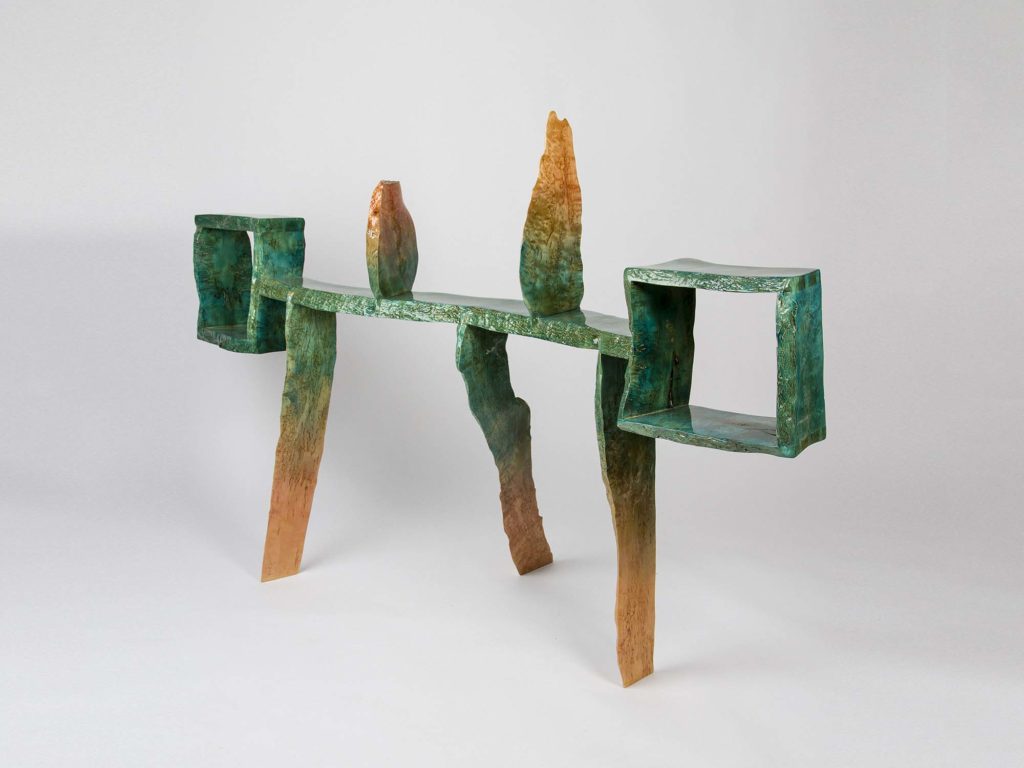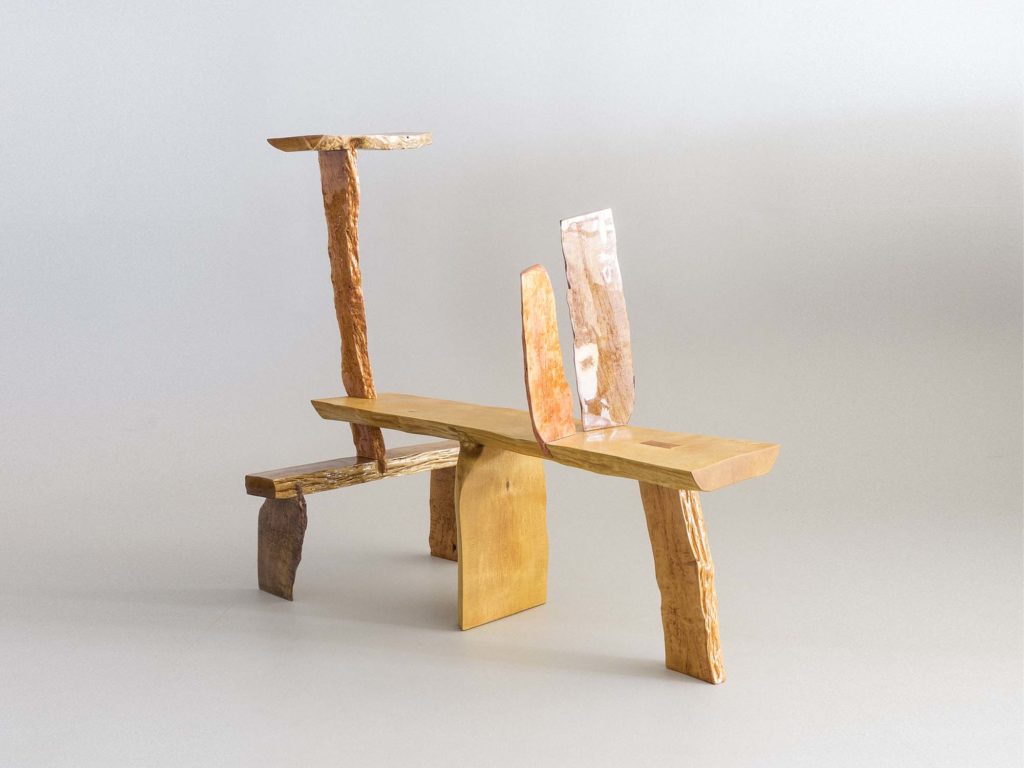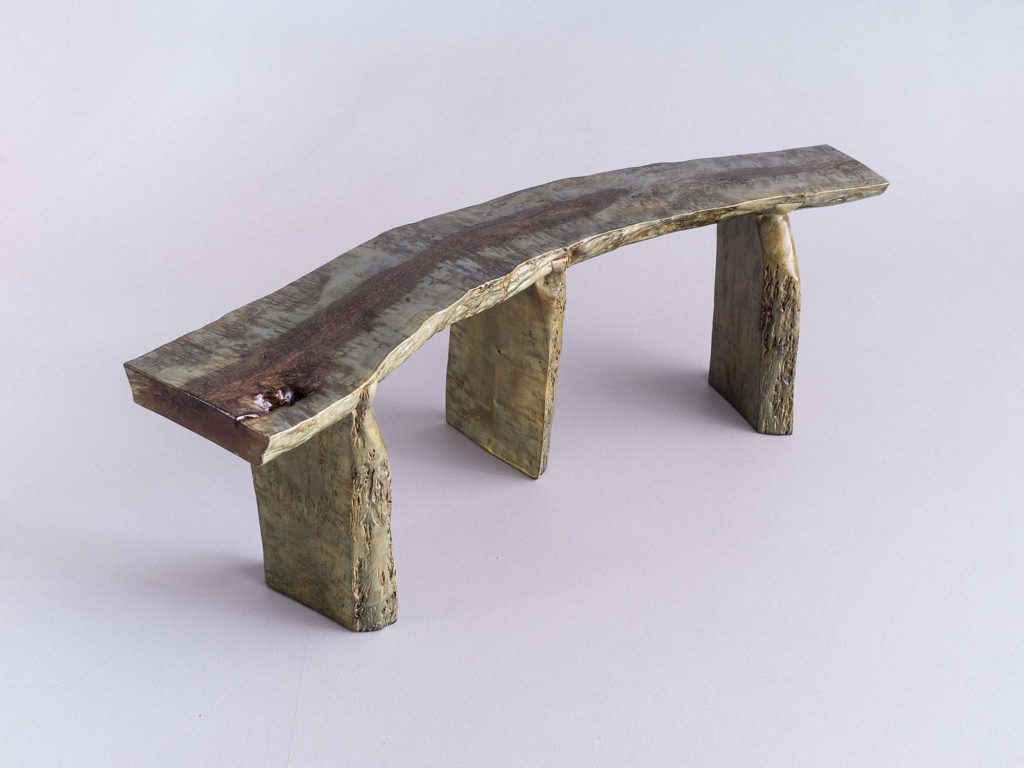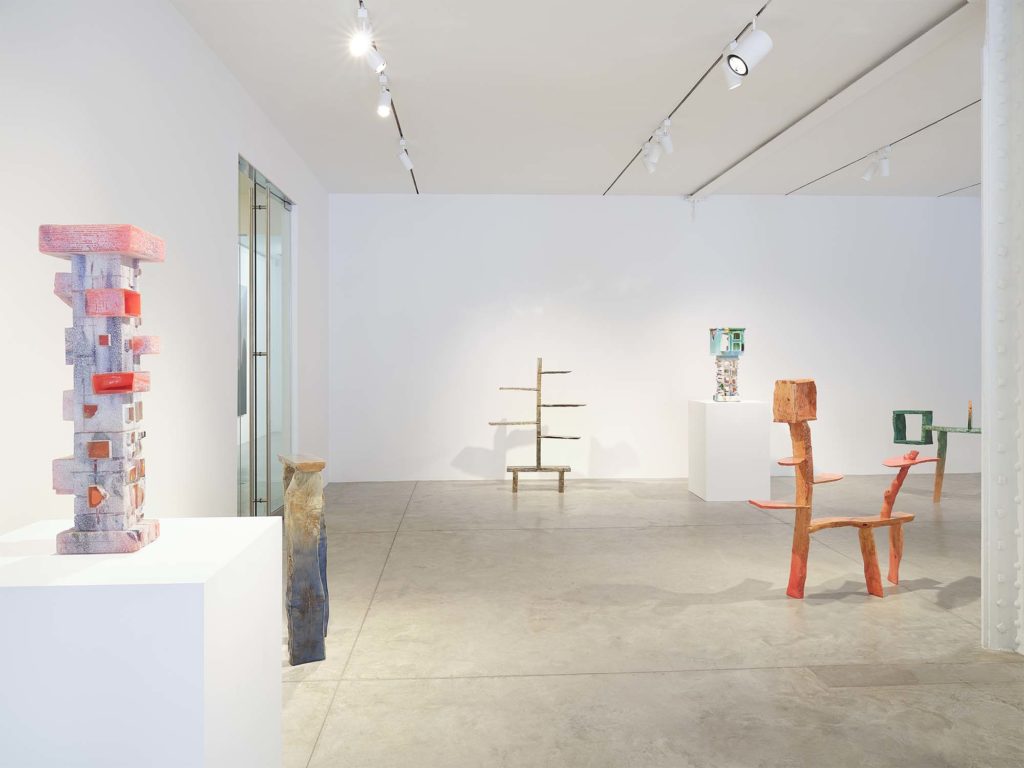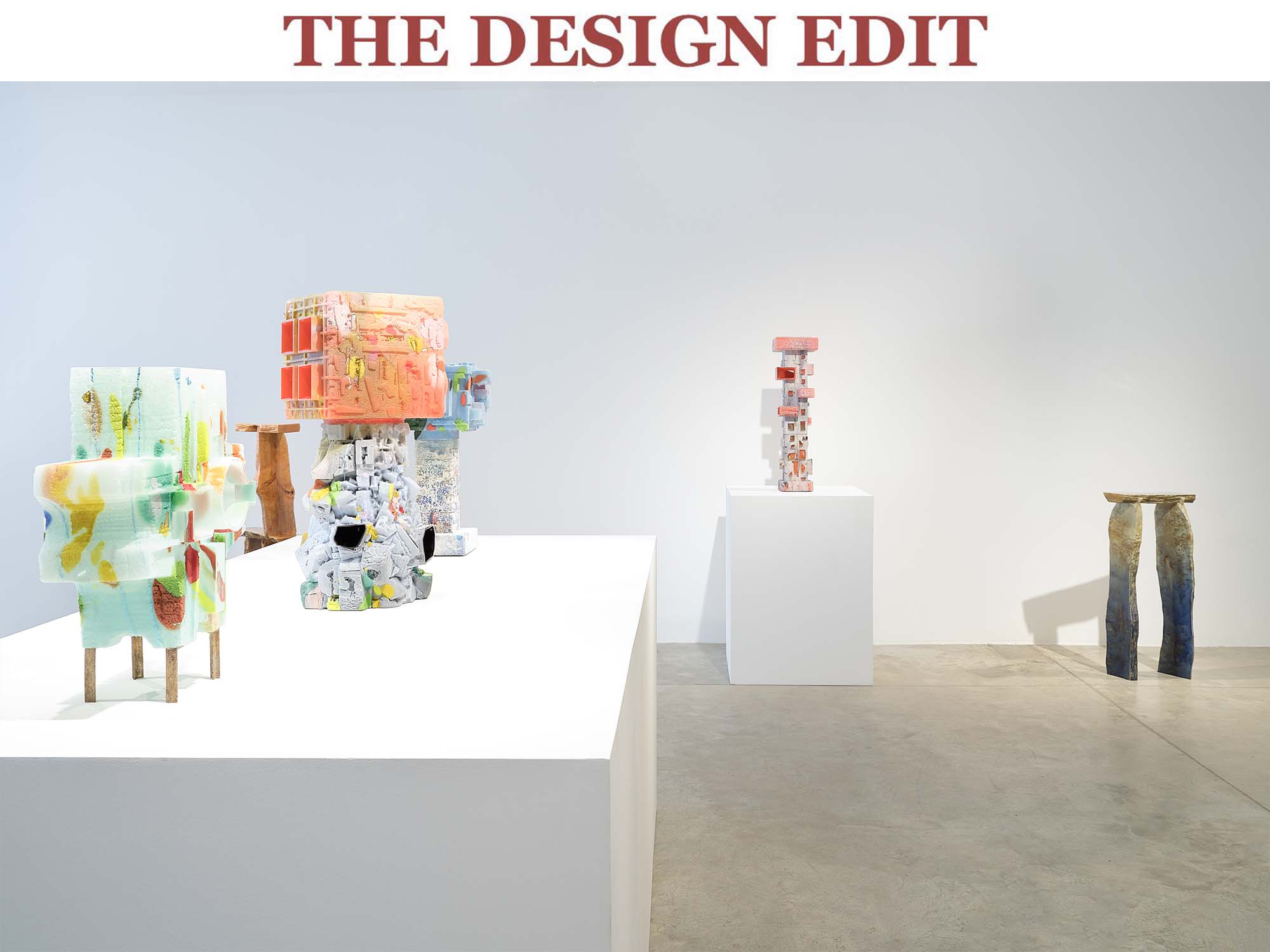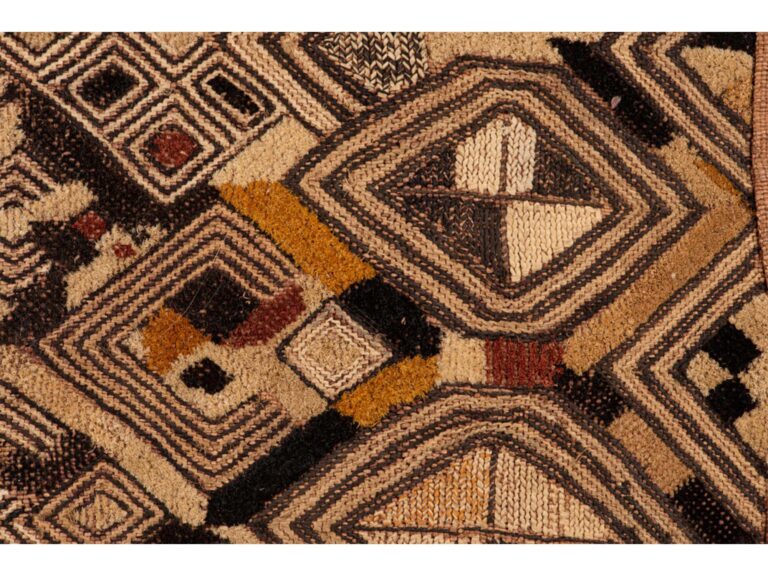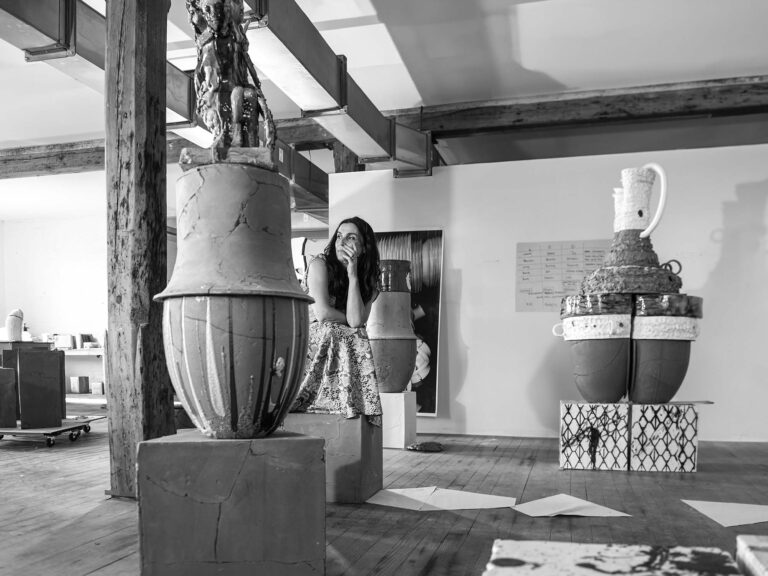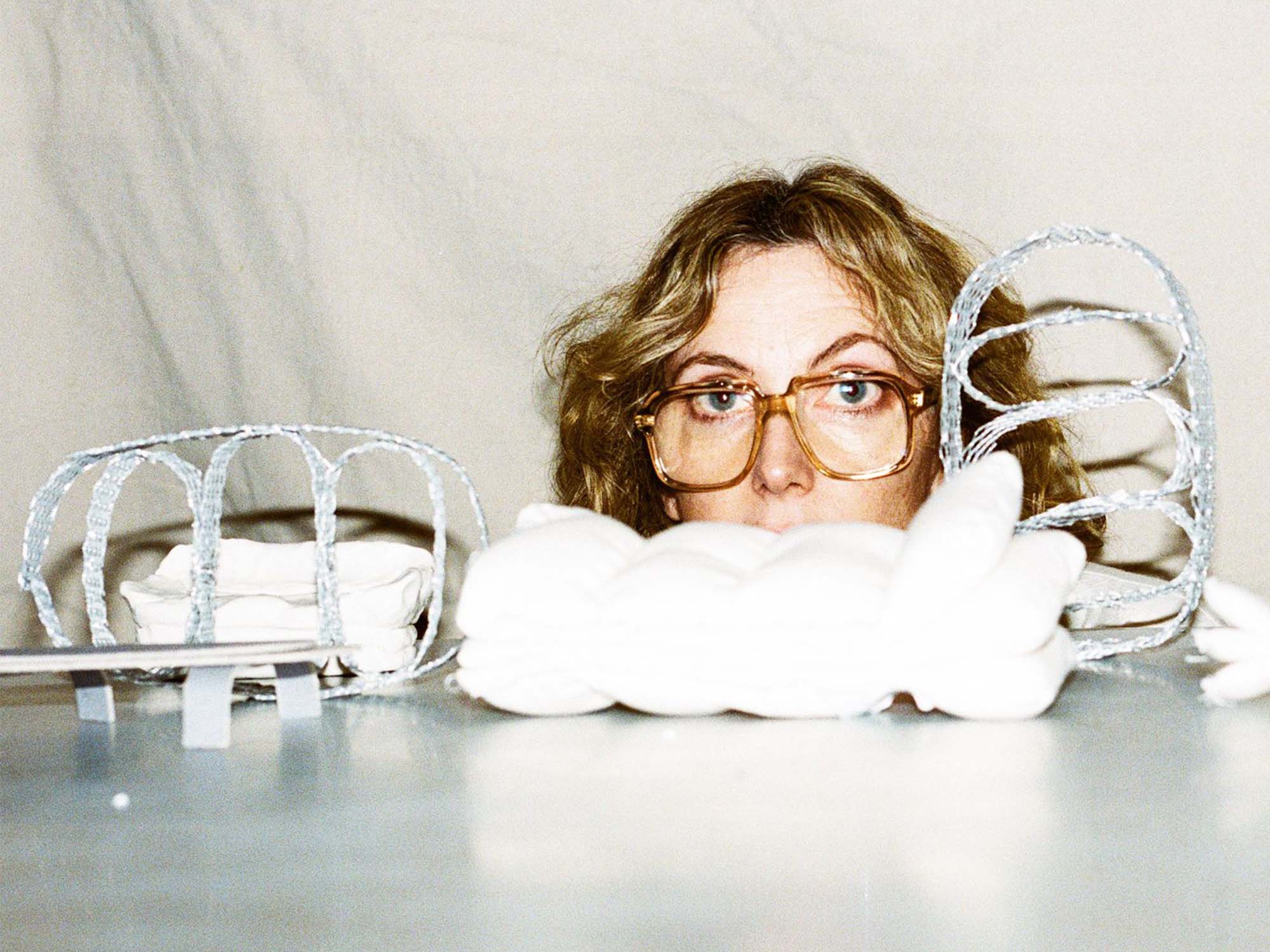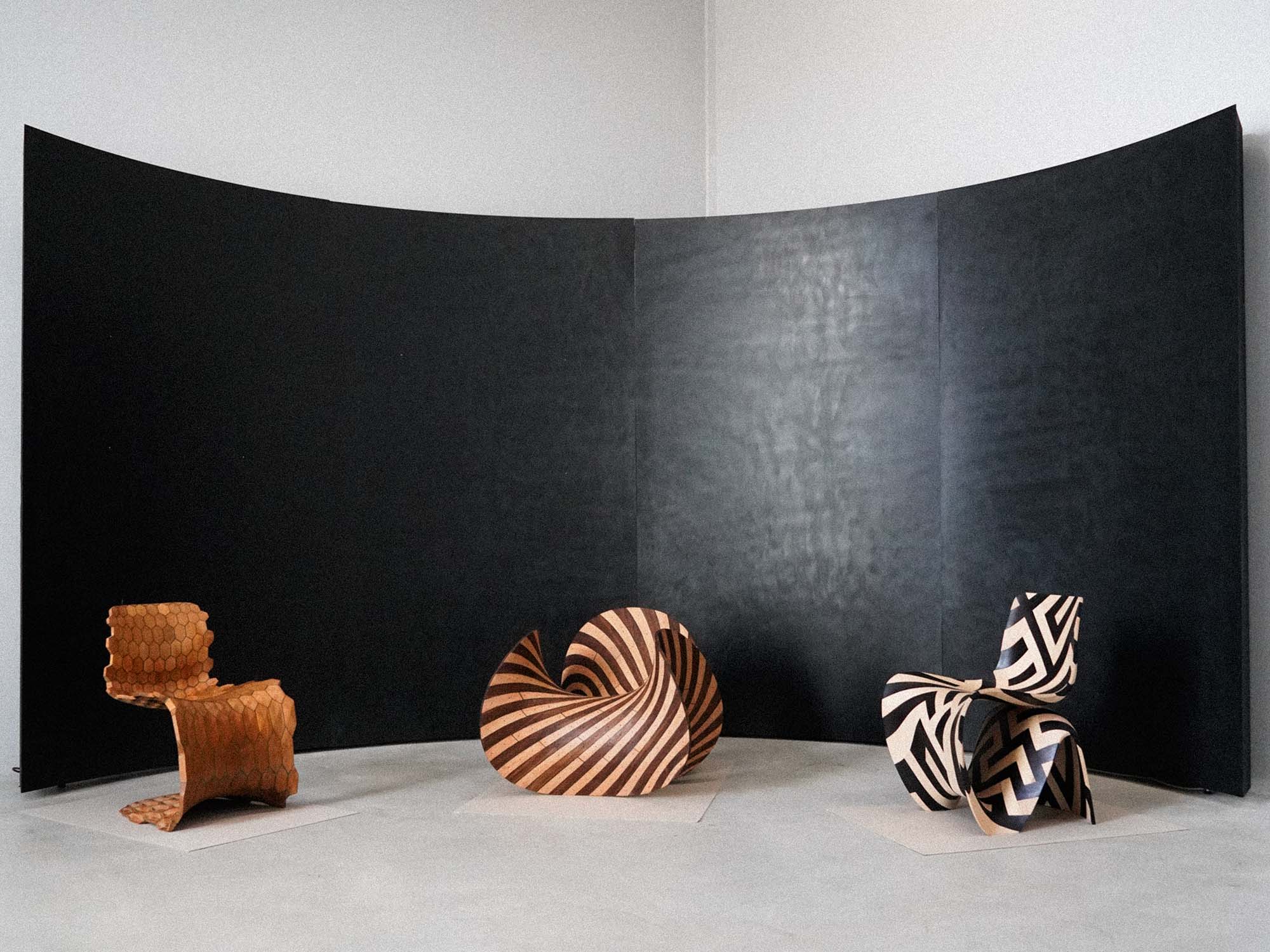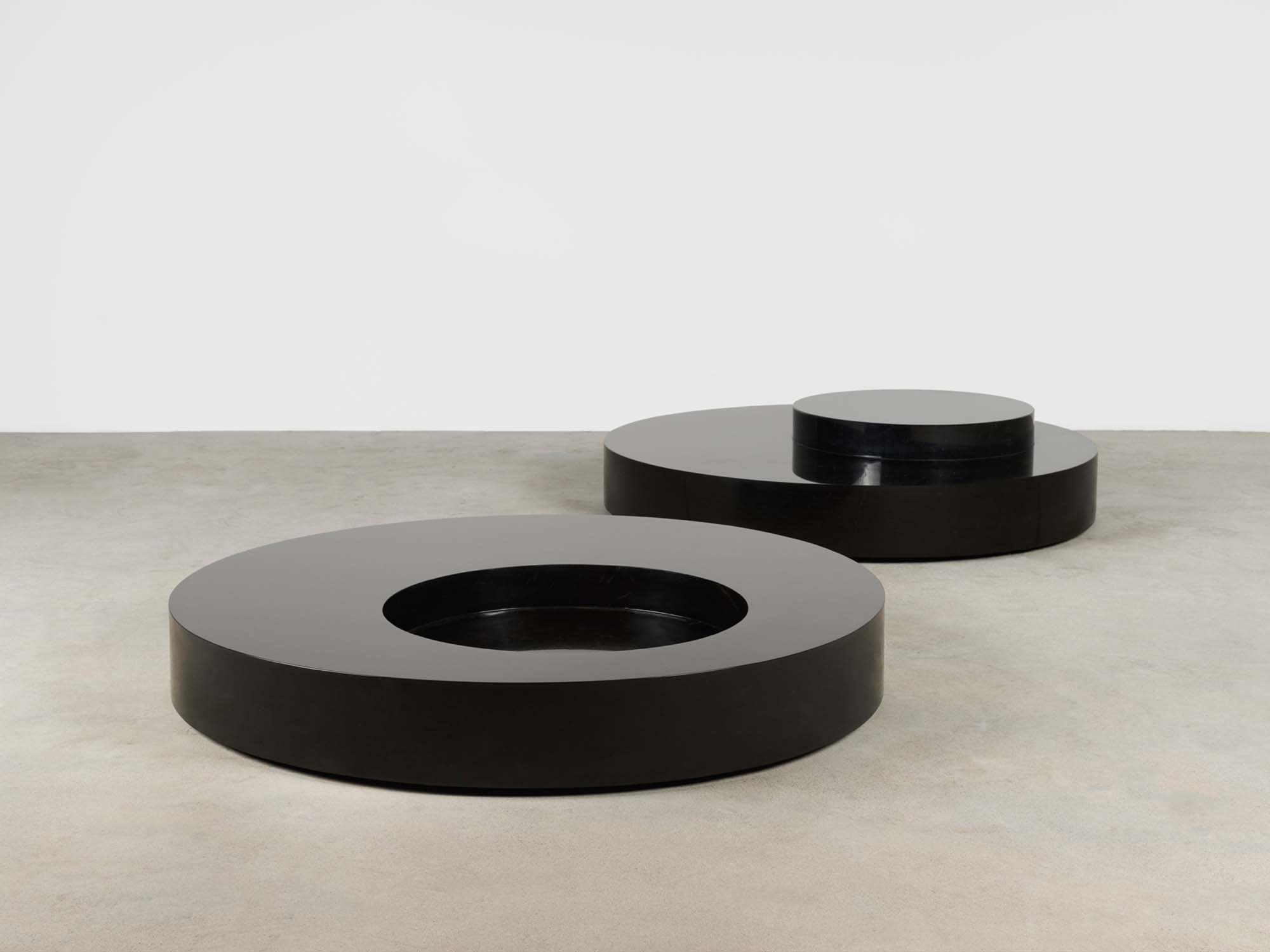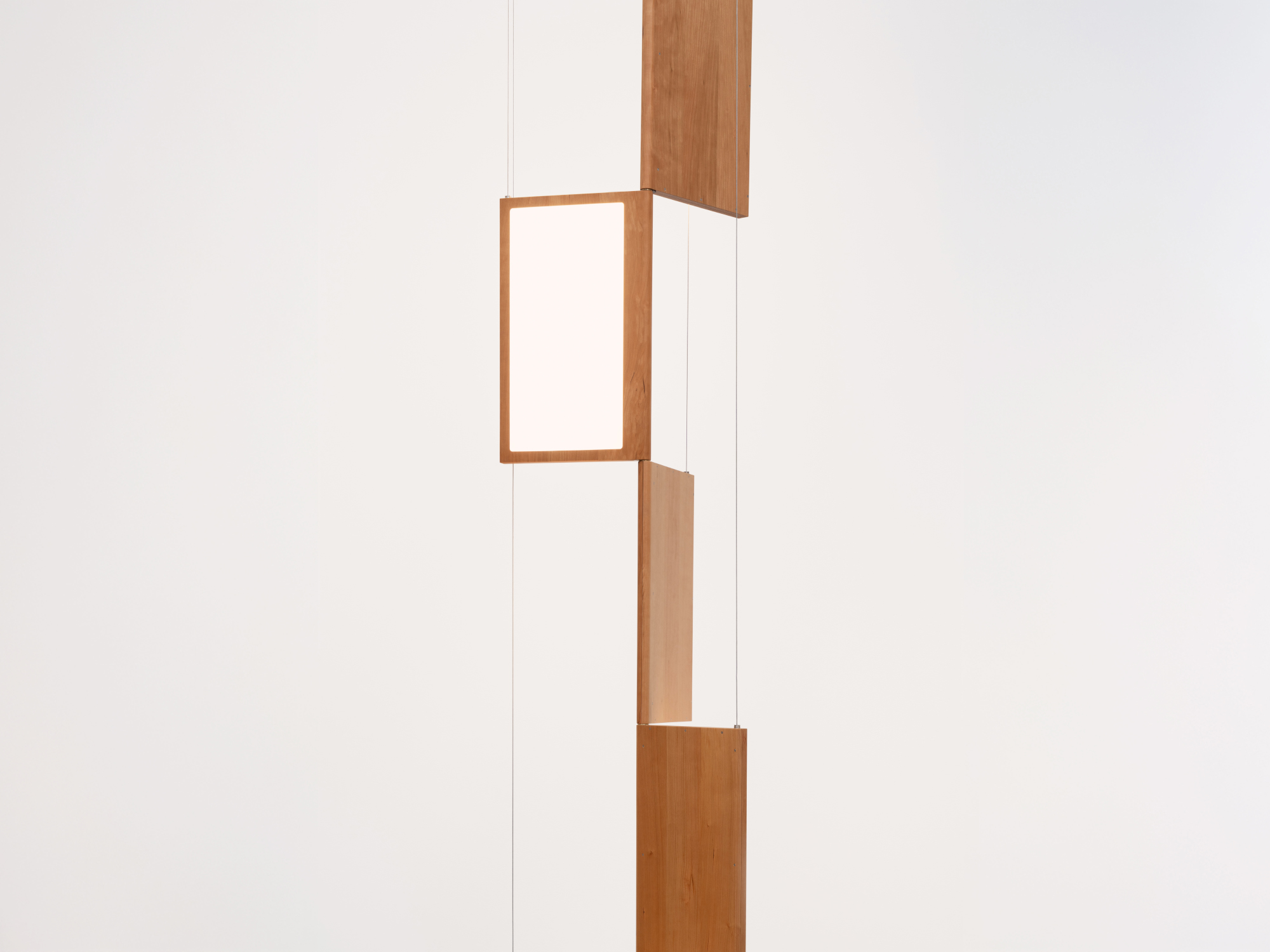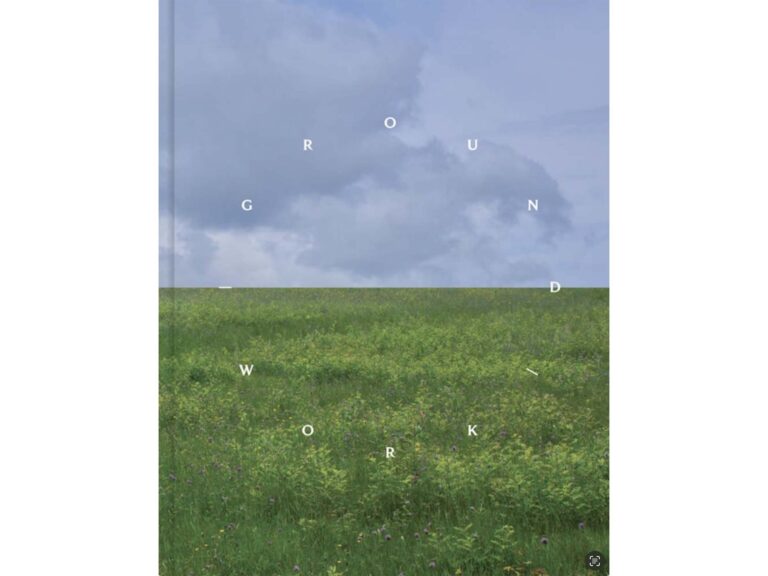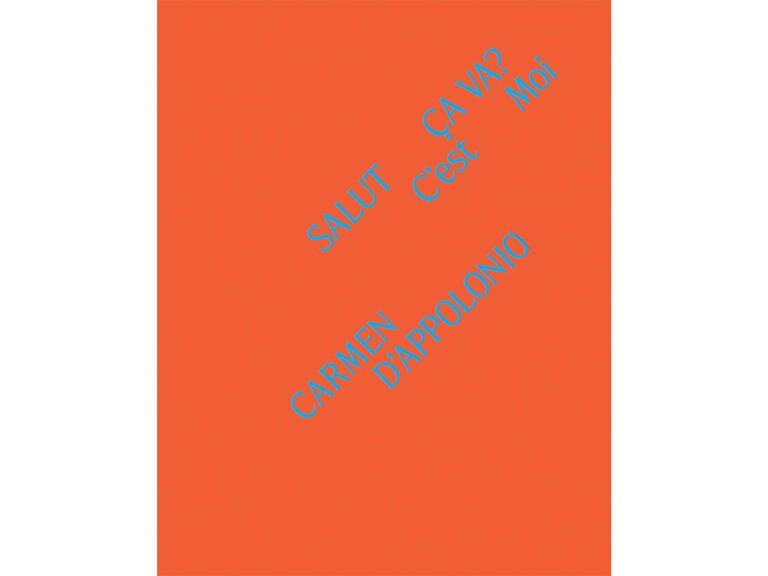By Brecht Wright Gander
IF GLASS ART tends to be boring, I blame it on Thaddeus Wolfe. He seems to have sucked all the creative energy out of his peers and preserved it for himself, leaving a dreck of dewdrop paperweights and Chihulyesque so-pretty-you-want-to-smash-them chandeliers in his wake. Wolfe’s forms, in contrast, occupy an under-explored middle space between speculative architectural models (think Libeskind) and storage vessels (think amphorae). His works are crystalline and faceted, broken and crumbling. These are manmade works that seem to be beleaguered by the kinds of ravages that man inflicts. They are eroded by violence, like buildings in which the façade has been torn open by artillery blasts.
His signature process involves creating positives in expanded polystyrene, making moulds of them, blowing glass into the moulds, and then processing the glass by selectively cutting and sanding (cold working). While the moulds provide a significant level of formal control, the colours cannot be precisely directed, only nominated – they move in the liquid medium of the glass and are stretched and compressed as that liquid expands in the mould.
When it comes to vessels and buildings, insides are very different from outsides. Wolfe cuts into his pieces with abruptly violent interventions that call to mind the architectural surgeries of Gordon Matta-Clark and the sculptural dioramas of Gonzalo Fonseca. These portals reveal an interior coated in a glossy, lubricated surface, often coloured an even, incarnadine red.
The outer dermis, meanwhile, is usually a satin or matte sheen, crenelated and patterned with colourful freckles and birth spots. In part, this contrast is an outcome of the glass blowing process – the inside surface of a glass bubble remains pristinely smooth while the exteriors gather the surface texture from the mould.
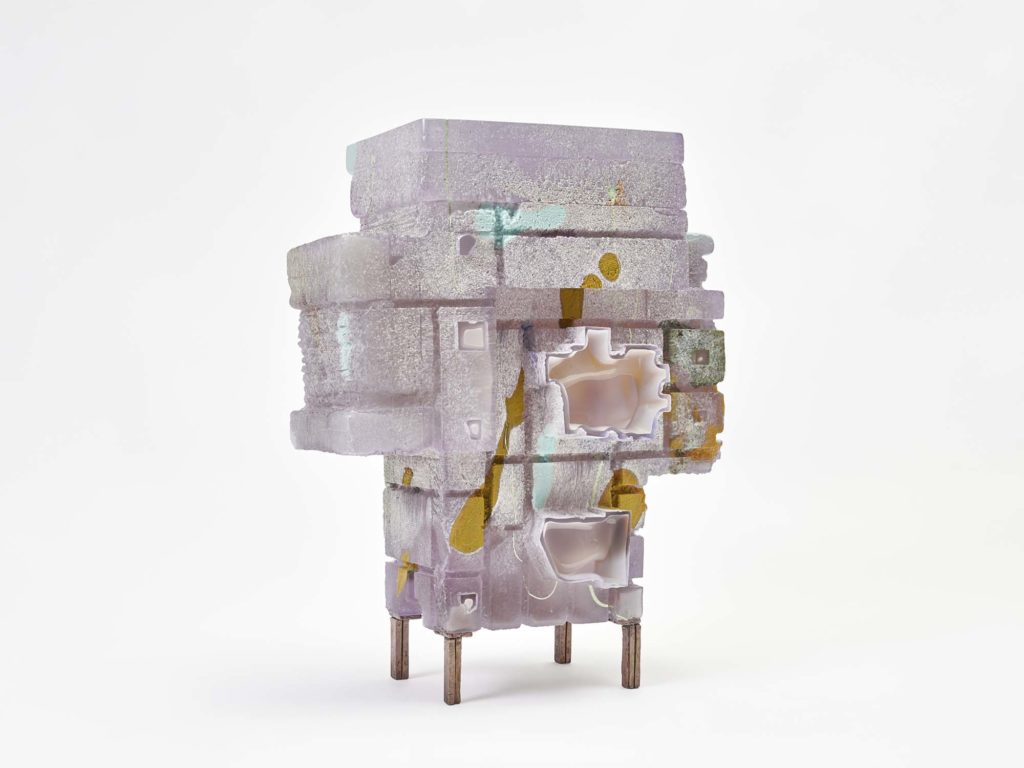
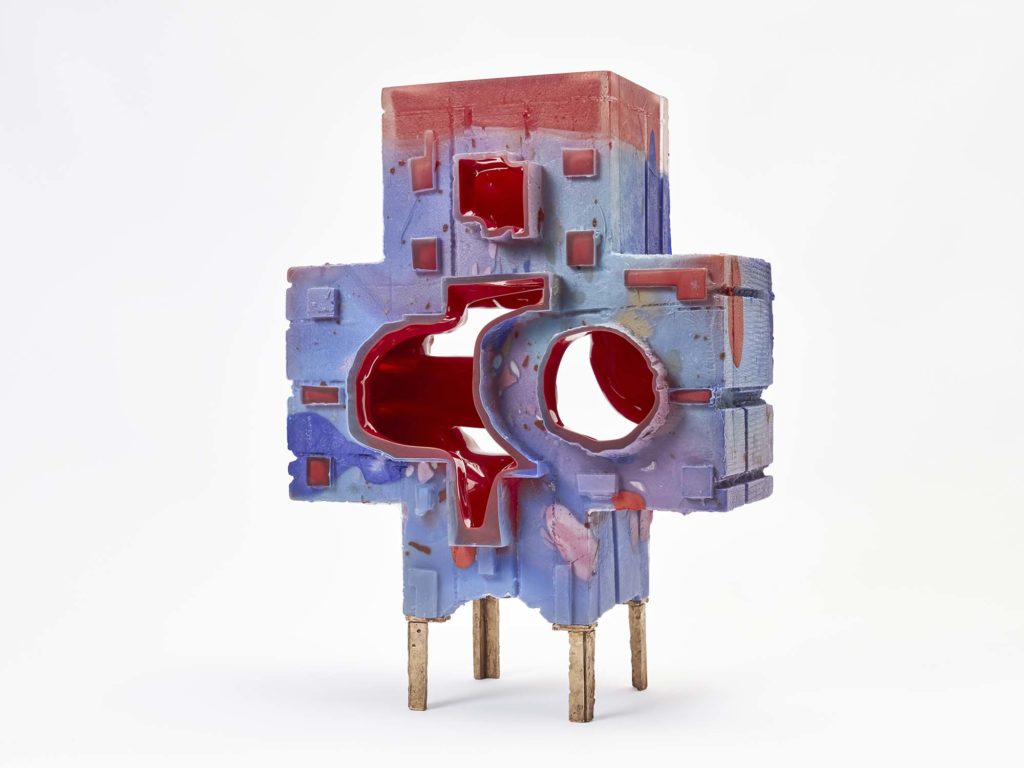
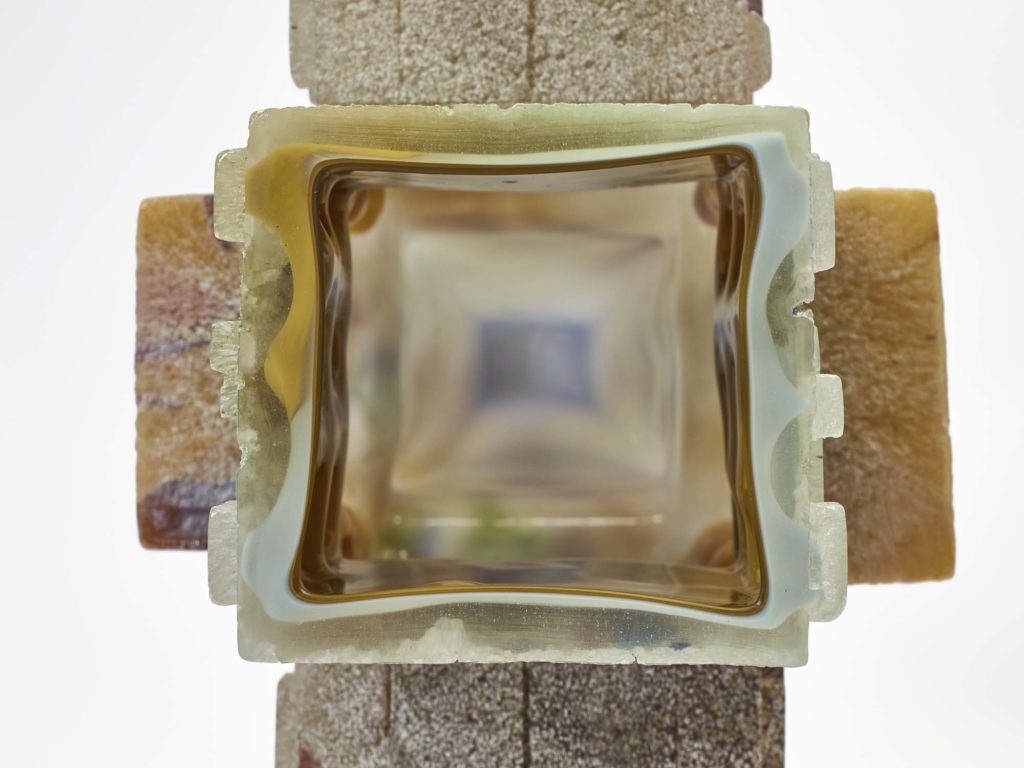
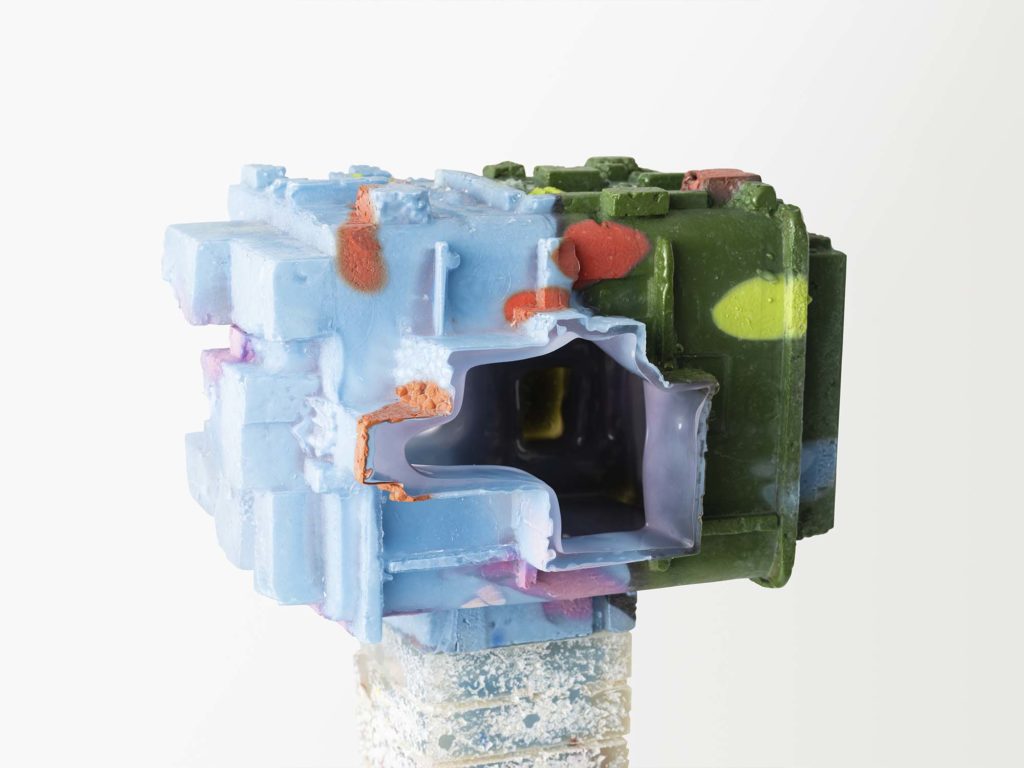
Mottled, speckled, blotched, splattered, splashed, freckled, flecked, flaked, pied, dappled, stippled, piebald: it takes some effort to capture in language the full range of colour effect that Wolfe delivers. Glass has a delicious depth which offers unlimited opportunities to combine opacities and translucencies with colouration, which mere glazing – as in oil painting – can only envy.
The medium is diabolically difficult to master. Glass works like two-thousand-degree taffy that loves shattering. Its molten radiance is both awesome to look at and bone-searingly hot to be near. The weight of it, particularly since it must be manoeuvred at the end of long metal tubes, adds to the laborious intensity of the craft. It is not surprising that so many glass artisans surrender to the beauty of their material. Even Carlo Scarpa, who was deeply sensitive to an aesthetic of mystery and gravity, made merely lovely shapes when he worked with that lovely material. Wolfe stands apart from his field, in his embrace of dissonance and rupture.
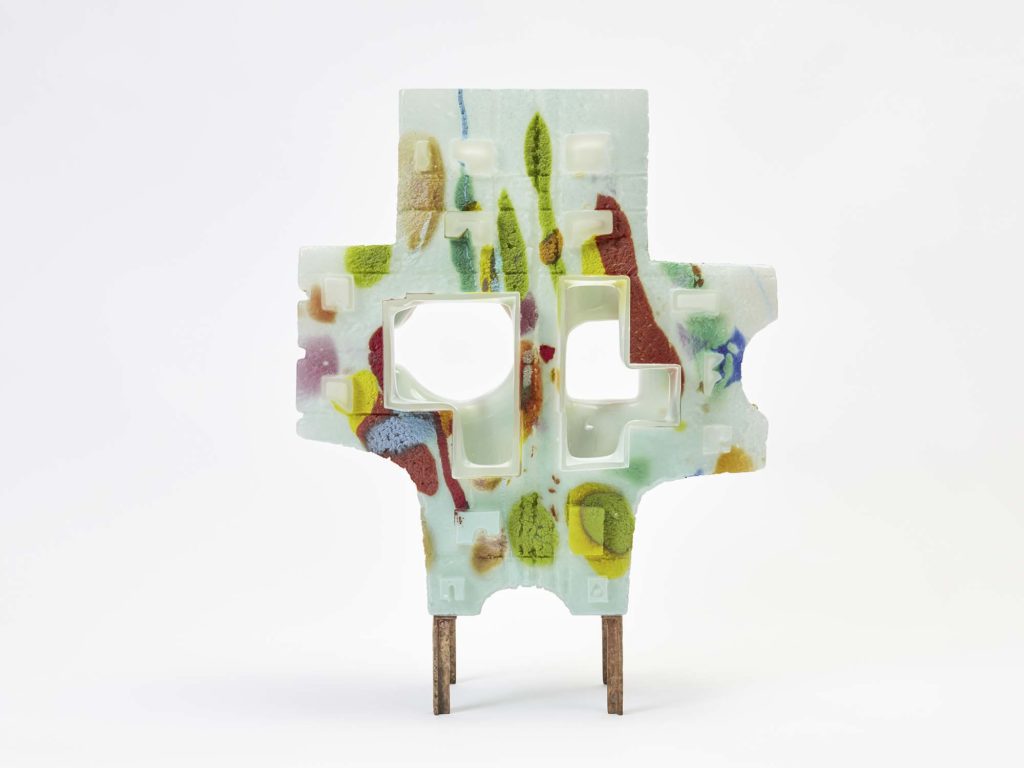
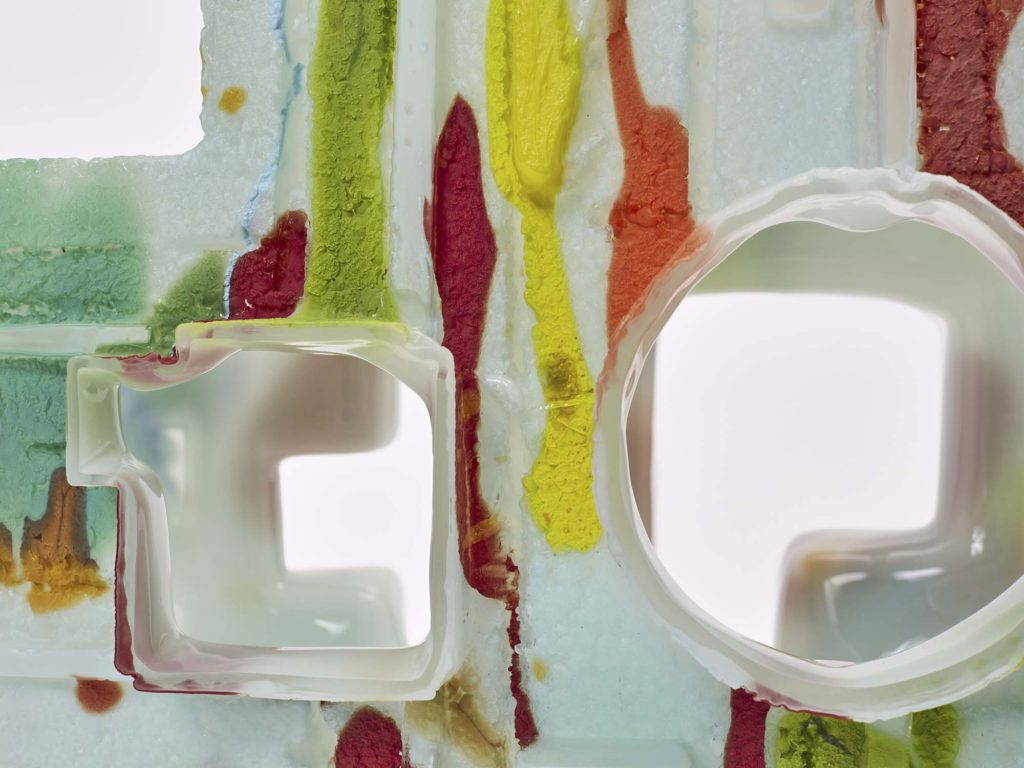
Wolfe shares the show with Mattias Sellden. Each of Sellden’s pieces is gracefully composed in live edge birch boards, so that the profiles of each design are partly determined by the profile of the tree from which the board was extracted. The surfaces are finely finished with ombre stains and a glossy thick clear coat. As a body of work, there is a strong sense of unity in his vision. His compositions are spare and lyrical in form and rich and opulent in pattern (the grain of the birch, the glistening clear coats, the ombres and stains).
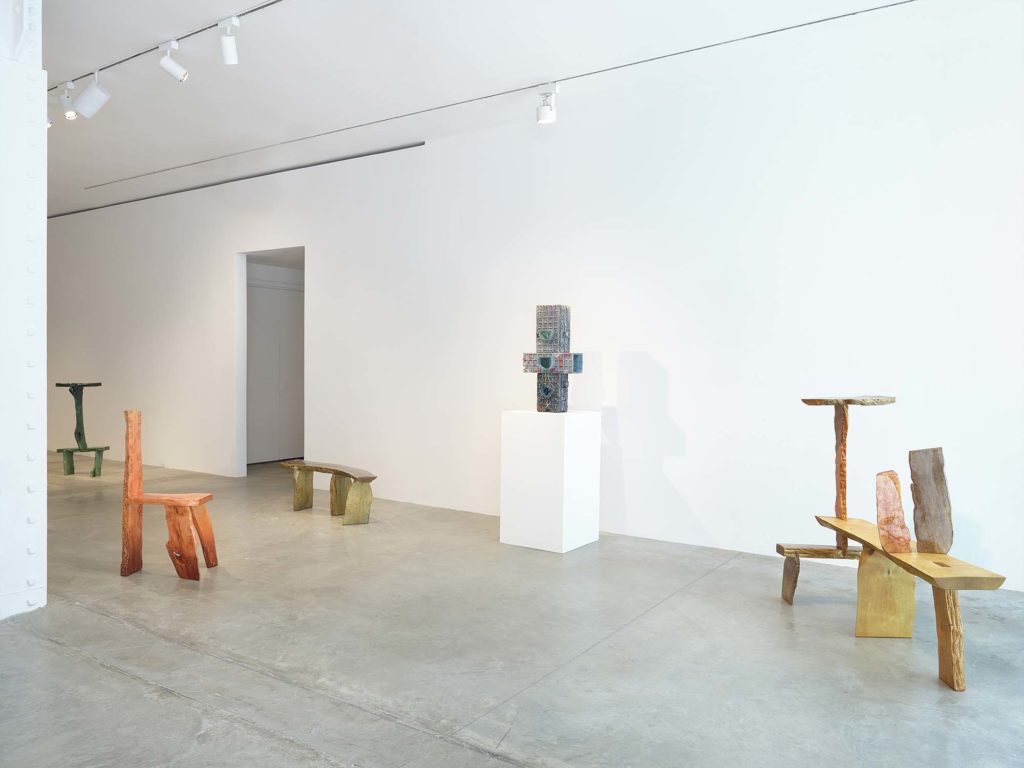
That summed up my initial observations, so I took a look at the press release and website to see what other angles of appreciation might prove enlightening. Friedman Benda has been one of the leading galleries in terms of their investment in a critical infrastructure of writing and discourse, so perhaps my mentioning these particular texts is not fair. However, it seems to me, that this sentence, quoted from Friedman Benda’s website – “[Sellden] works with different kinds of wood, as they all have different qualities and are suitable for different things and uses different kinds of surface treatments” – is hardly helpful.
Sellden’s work is dis-served by the absence of a more rigorous critique. For the truth is that Sellden’s work reflects a strong poetic sensitivity, but whether it compellingly addresses the questions that are suggested in the press release, such as whether wood “has its own agency,” I am less certain.
There is a lively contemporary discourse surrounding object-oriented ontology. New angles of this discussion were instigated in the last decade by the eco-political writings of Jane Bennett, who ascribes to inanimate matter a greater share in the agency to which humans often lay exclusive claim. Artists such as Isabelle Andriessen and Geumhyung Jeong and Jes Fan are exploring these zones of thought with discomforting depth. But it’s hard to imagine that a tree’s agency is expressed by being chopped into pieces, mechanically forced into a new form, sanded, stained and sealed. Trees seem to behave rather differently when left to themselves.
Wood has, as Adrienne Rich puts it in her poem Song, “a gift for burning.” But to burn well it first must be seasoned. Sellden too may have a gift for burning – he is certainly making sparks – and there is every reason to suspect that there are flames to come. Meanwhile, Sellden’s inclusion in this two-person show with Wolfe was a smart bit of curation. Sellden’s work beams back at Wolfe’s – his finishes are as glossy as the pristine interior of glass bubbles – and together the two artists fill the room with a generous current of colour.
